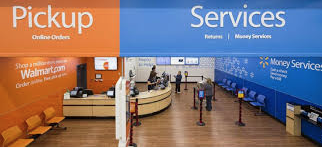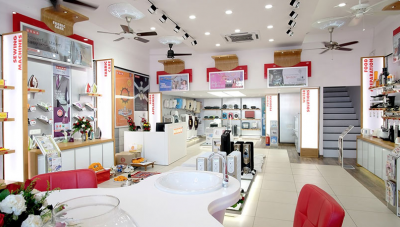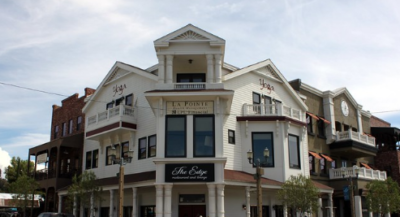
The assumed demise of bricks-and-mortar retail stores in the age of e-commerce doesn’t appear to be playing out the way the real estate industry thought it would. In fact, a melding of in-store and online services—even for some brands that started out as digital-only—seems to be a winning strategy aiding a retail resurgence, says Todd Caruso, a senior managing director at commercial real estate brokerage CBRE.
“We are really seeing an upstart renaissance” within the retail sector, adds Garrick Brown, vice president of retail research at Cushman & Wakefield. Still, plenty of challenges remain for retailers, including over-saturation of physical stores and not enough investment in online platforms or in-store shopping experiences, Brown says. “You can’t compete with the likes of Amazon when it comes to convenience. You have to give consumers a reason to come into your store. If your value offering has previously been convenience of access—and not value or the experience itself—then in most retail categories, you have been disrupted.”
The ‘Click-and-Collect’ Strategy
Some bricks-and-mortar operations are tapping into consumers’ desire for instant gratification by offering online shoppers a faster in-store pick-up option and online returns. Such a tactic appears to be boosting traffic at physical stores: More than 53% of Americans say they use “click-and-collect” options—which enables the online purchase of a product and an in-person pick-up at the store—according to the International Council of Shopping Centers. Of consumers who use click-and-collect shopping options, 61% report using them at least once per month. Further, 67% say that when they go to a store to collect their online purchase, they end up buying additional items from the retailer.
“The use of click-and-collect demonstrates the ongoing convergence of physical and digital,” says ICSC President and CEO Tom McGree. “Consumers want options when making their purchases, and the retailers who are offering the most channels are seeing more purchases being made.”
That may help explain why foot traffic at physical stores is climbing. Nearly 80% of consumers report visiting physical stores as much or more than they did two years ago, according to ICSC, with entertainment and dining venues seeing the most traffic.
The Retail Winners
Certain types of bricks-and-mortar retailers are faring better than others. Brown points to food halls—the sharing economy for restaurants—and wellness-related businesses as seeing significant in-store growth. Retailers offering niche lifestyle options, such as Restoration Hardware and Sur La Table, and discounters are also growing, Brown says.
Retail chains that are in expansion mode are also in a stronger negotiating position with landlords, Brown says. “While it was rare just a few years ago to find many landlords to agree to temporary deals for chains to ‘test run’ a location, short-term pop-up stores are now routinely being used by many chains to evaluate viable permanent locations.” Some big-box retailers such as Kohl’s and Target are experimenting with smaller storefronts to improve sales while trimming overhead costs, Brown says.
Unlikely Partners
One way physical retailers are enticing more shoppers is by partnering with an online competitor to expand their services. For example, Kohl’s, a clothier known for its superstores, and Amazon have paired together, enabling Amazon shoppers to return their online purchases at more than 1,150 Kohl’s stores in 48 states. The partnership helps Amazon simplify its return process and encourages more foot traffic at Kohl’s stores. Amazon products are also sold in many Kohl’s stores. “The traditional apparel retailer today not only has to think about the storefronts and staffing them and driving sales, but they also have to be in the e-commerce game,” Caruso says.
Retailers that began online are establishing a physical presence, too. The top 100 “digital-native” brands have announced plans to open at least 850 stores over the next five years, according to a research from commercial real estate firm Jones Lang LaSalle.
Nearly three-quarters of “clicks-to-bricks” retailers are apparel and accessory brands, JLL notes. But other digital-turned-physical retailers are emerging, such as Wayfair, a furniture retailer that announced plans to open its first physical store this fall in Natick, Mass. Company officials say the store will focus on the customer experience, providing consumers with design advice and the ability to order items on the spot for in-home delivery.
Further, Amazon, an omnipresent tech giant that has long been blamed for putting many bricks-and-mortar retailers out of business, now has more than 600 physical retail locations across the U.S. That includes its Whole Foods brand along with retail stores like Amazon Books, Amazon Go, AmazonFresh Pickup, Amazon pop-up stores in malls, and package pickup storefronts.
“It’s all part of this omnichannel strategy,” Caruso says. E-commerce has helped retailers refine their business strategies, but “to holistically serve the consumer today, they are realizing they also need a bricks-and-mortar strategy.” Data on online shoppers can help retailers see where their most loyal customers reside, which also helps them target locations for physical stores. “They know exactly where their buyers live—so why not put a physical store there for name recognition and excitement since customers are already familiar with them?” Caruso says.
But as some retailers learned in the past—RIP, Toys ‘R’ Us—name recognition isn’t always enough. Retailers also are putting a focus on greater staff training to be more customer service–focused and knowledgeable about products. They’re also growing their in-store product assortments, introducing customer loyalty programs and lowering prices. Forty-four percent of retailers say they’ve cut prices to compete with online rivals, according to a survey of 256 global retail executives conducted by The Economist and Applied Predictive Technologies.
“The moral of the story is that to thrive in today’s e-commerce world, retailers must either be focused on value or on a heightened experience,” Brown says. “There is no room for mediocrity in retail anymore.”








